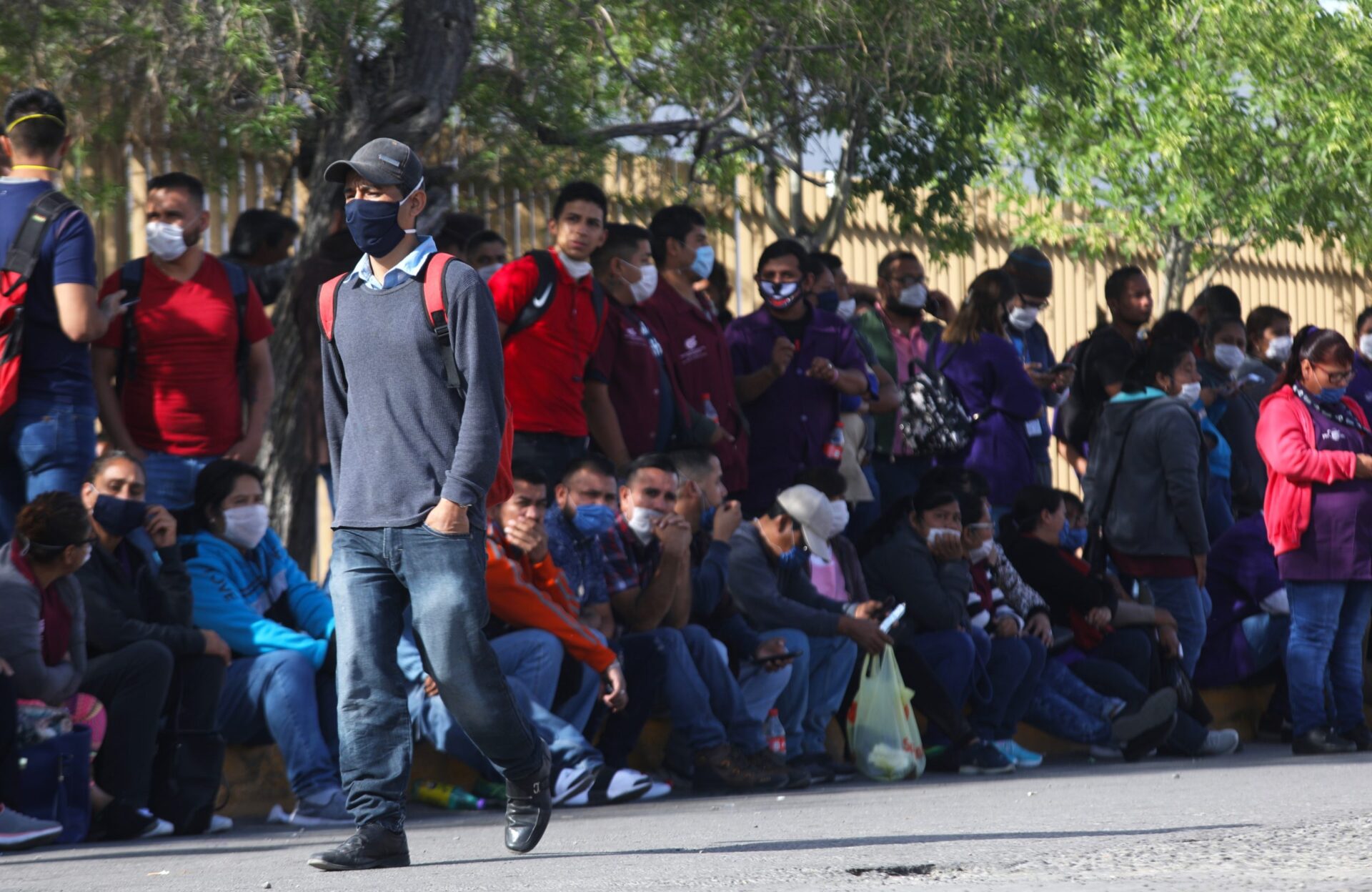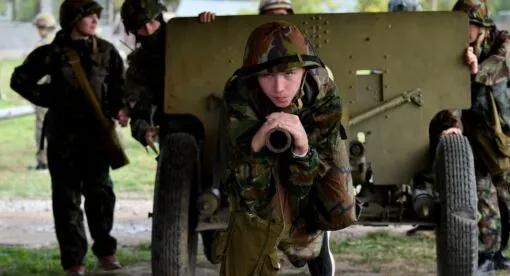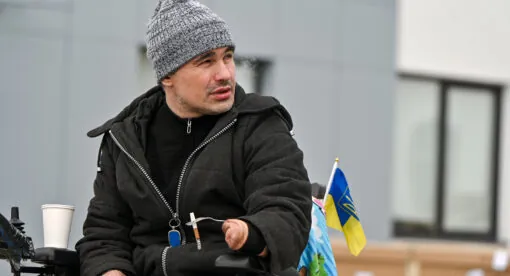The coronavirus pandemic is highlighting the need for expanded refugee policies and changes in how refugees are supported and who provides that support.
The COVID-19 pandemic has provided us the ultimate test of the efficacy of our international humanitarian organizations and refugee support systems. Global, centralized humanitarian organizations have been unable to respond sufficiently to the most vulnerable during this crisis. In the post-pandemic world, a full assessment of the refugee-related response activities will be needed, along with an analysis of the current model of service provision, response, and capacity. Policymakers and stakeholders should consider alternative models that decentralize service provision and focus on building up local services and response globally to promote rapid response and limit challenging border and travel situations.
The Risks to Vulnerable Communities
In the short term, the close living conditions of refugee camps will result in a higher rate of disease spread and associated fatalities. In the long term, there are questions of how refugee populations the world over, numbering at over 70 million, will manage their precarious situation as they sit in a resettlement pipeline that has stalled, perhaps fatally. Our pandemic responses of social distancing, remote working, and intensified border and travel controls will limit the ability of refugees and migrants to move along the pipeline to a safer living environment, particularly as nations become more insular and focus on the needs of their existing citizenry.
Given all of this, international humanitarian organizations and lawmakers must consider what happens when temporary refugee camps become more permanent residential areas, with the risk of becoming large slums, and how to continue to provide services to camp settings while considering alternative policy-level solutions to resettlement. Global commitment to the development and maintenance of durable solutions for refugees can provide valuable controls for the management of coronavirus and future novel viruses, and should play a role in the development of refugee policy.
The Current Situation: A Sampling of Border Management
On March 20, the United States and Mexico curbed all non-essential travel between the nations, including (on the U.S. side) an intensified crackdown on illegal migration. The U.S. Department of Homeland Security reports in a recent weekly update that Customs and Border Protection agents are encountering significantly fewer illegal migrants attempting border crossings, from approximately 10,000 a week to 4,200 a week, which can be attributed to the United States’ mandated port and border closures. In direct contradiction of existing U.S. asylum law, in compliance with the White House’s recent executive order, all individuals seeking asylum and unaccompanied minors are being excluded from entry, creating an acute humanitarian crisis at the U.S.-Mexico border.
Meanwhile, Greek officials have closed down their country’s entire asylum system, stranding more than 125,000 asylum seekers. Official asylee status has its benefits, and individuals with status can access social and health services previously inaccessible – a true benefit not only to the asylee but to the health and safety of the greater community. Despite efforts from the EU and attention to this issue from the Greek government, borders into neighboring EU countries remain closed, as are the majority of neighboring asylum systems and pipelines, with no relief in sight for the refugees and asylum seekers. Further, NGOs in the region who have provided Mediterranean-based rescue services have discontinued operations amid coronavirus fears, leaving migrants to face an even more dire situation than is typical for them.
In cases where a closed border is not a confining factor, refugees are left with a stark and difficult decision: to stay in vulnerable camps and risk infection with severely limited healthcare options, or to risk returning to their war-ridden and insecure homelands. This is certainly the case with Afghan refugees in camps in Iran and Pakistan, both of which have experienced a spike in COVID-19 cases. A recent Institute of Migration report finds 163,000 Afghan refugees in Iran and 70,000 Afghan refugees in Pakistan have flowed back to Afghanistan over the last several weeks, having made the difficult decision to return to a violent nation with a fragile peace accord and severely limited health care options rather than remain in vulnerable camp settings. Given the status of the infection in Afghanistan, where officials cite an overall national infection rate to be 50% of the population, the relative success of this choice is dubious.
Response and Policy Considerations
Stakeholders and policymakers should consider the following issues when considering future actions in this area:
- Elevation of local response functions: Large humanitarian organizations depend on their global workforce to provide support in local settings. If local agencies are empowered to develop and manage their own response in coordination with other agencies, critical service delivery can continue despite limitations on the movement of workers and volunteers. This should include the decentralization of decision-making functions, leaving the central offices to act as a resource for funding, reporting, monitoring, and technical assistance to promote those localized services. The benefits of localization are multiple, including a workforce fully versed in the social, cultural, and religious traditions of vulnerable communities.
- Multilateral and bilateral agreements: Donor nations should provide support for refugees in other countries by creating bilateral agreements linking economies, industries, and security. The EU-Jordan Compact implemented in 2016 strengthens the relationship between the European Union and Jordan through the development of mutually beneficial programming, with additional support programming built in for the population of Syrian refugees in-country. Under this compact, the Jordanian government provides work permits to a significant number of Syrians, allowing them access to professional opportunities and financial independence. Although this is a temporary solution, it provides a viable and humanitarian alternative to traditional refugee camp life, without having to manage travel and border crossings made problematic by COVID-19.
- Prioritizing immunizations for the vulnerable: As health researchers race to create a vaccination for COVID-19, distribution planning should prioritize the world’s most vulnerable when considering immunization roll out. The world’s hot spots – those locations with high population density, high poverty, limited health services, and transitional housing – should not be forgotten during initial widespread immunization. If left unattended, COVID-19 will continue to proliferate in these sites and easily affect host communities. Further, plans for vaccine dissemination should be intertwined with existing refugee and asylee systems so that resettlement pipelines can return to normal operations.
- Community sponsorships: Mechanisms of engaging community-level groups should be expanded. Individuals, community organizations, and other groups should be empowered to resettle a family from abroad, limiting federal-level engagement to immigration, health and security legalities, and protocols while shifting in-country support and resettlement services to communities.
The threat of disease spread is real, and while nations need to enhance safety practices to protect their citizenry, this cannot be a reason to promote instability of refugee and migrant populations. In the event that pathways to resettlement are not normalized, refugee populations will continue to attempt to access developed nations via other illegal routes. Nations must ask themselves whether illegitimate entry, with its lack of controls and associated disease threat, is preferable to an organized, legal system which allows for the assessment and management of medical conditions at points of entry. Expansion of refugee-related policy can provide a means of minimizing future threats of global infection. Further, international humanitarian organizations must reconsider established operational actions and their severe limitations in providing critically needed humanitarian support to refugees, asylees, and internally displaced people. This need is particularly apparent given the pre-existing global trend of limiting in-migration for vulnerable peoples and biases against refugee populations.
Dina Dajani is the former Deputy Director of the Newlines Institute’s Displacement and Migration program. She is an expert in international refugee and immigrant policy specializing in humanitarian and public health response and the development and translation of evidence-based policy research.
The views expressed in this article are those of the author and not an official policy or position of the Newlines Institute.







